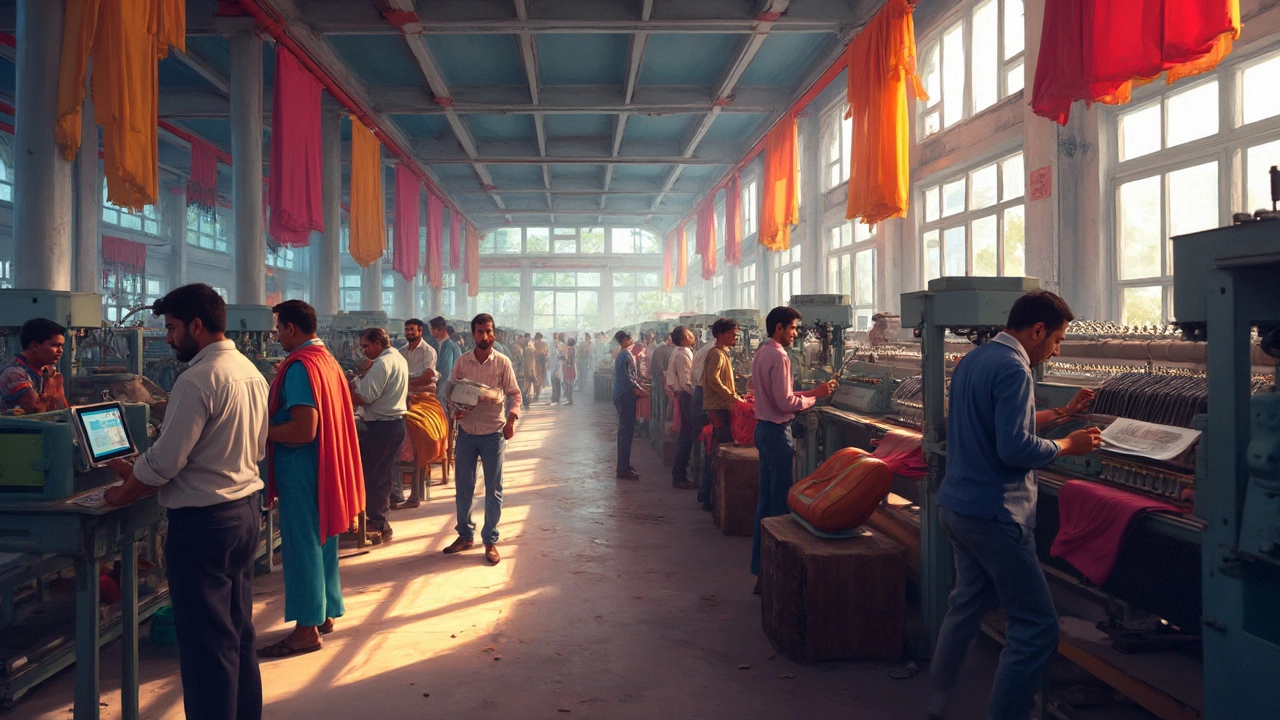Textile Industry Growth in India – Trends, Opportunities & Insights
If you’re wondering why the textile sector keeps popping up in business news, you’re not alone. India’s textile industry is on a steady rise, and the numbers back it up. From record export volumes to new technology adoption, the industry is reshaping the way fabrics are made and sold.
Why the sector is booming now
One big driver is government support. Initiatives like "Make in India" and the Production Linked Incentive (PLI) scheme have lowered tax barriers and offered cash incentives for modernising plants. That means small manufacturers can afford better looms, and big players can scale up faster.
Another factor is global demand for affordable, quality fabrics. Brands in Europe and the US are shifting production to India because labor costs are lower and skill levels are high. This shift has lifted export figures – the industry crossed 40 billion USD in shipments last year, a double‑digit rise from the previous period.
Key hubs and emerging trends
Surat remains the fabric capital of the country. Its cluster of polyester and cotton mills supplies over a third of India’s textile output. Meanwhile, cities like Tirupur and Bengaluru are turning into innovation hubs, experimenting with smart textiles, recycled fibers, and digital printing.
Sustainability is not just a buzzword; it’s becoming a selling point. Manufacturers are investing in water‑saving dyeing processes and waste‑to‑energy plants. Consumers overseas are willing to pay a premium for eco‑friendly garments, and Indian producers are ready to meet that demand.
Technology is also changing the game. Automation, AI‑driven quality checks, and IoT‑enabled machinery are cutting down defects and speeding up production cycles. For a sector that traditionally relied on manual labor, these upgrades are delivering higher margins without sacrificing employment.
Despite the upside, challenges remain. Fluctuating raw material prices, especially cotton and polyester, can squeeze profit margins. Additionally, the need for skilled technicians to run advanced equipment means training programs are essential.
If you’re considering entering the textile market, focus on niche segments like technical fabrics or organic cotton. These areas have higher growth rates and less competition. Partnering with local clusters can give you access to established supply chains and reduce entry costs.
In short, India’s textile industry offers a mix of strong government backing, growing export markets, and a push toward sustainable, tech‑enabled production. Whether you’re an investor, a manufacturer, or a supplier, the sector’s momentum provides plenty of room to grow.

Textile Policy 2024 Gujarat: What Textile Manufacturers Need to Know
The 2024 textile policy in Gujarat is stirring quite a buzz among manufacturers in India. This policy aims to turn Gujarat into a global textile hub by offering new incentives and support for textile units, both big and small. It focuses on everything from financial perks to green technologies. If you're a textile maker looking to expand, this updated policy comes packed with practical benefits. Here are the main highlights and what they actually mean for your business.
Read More